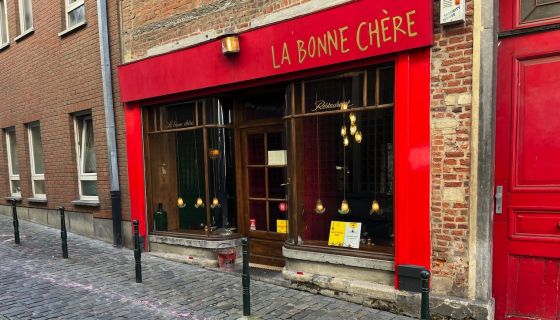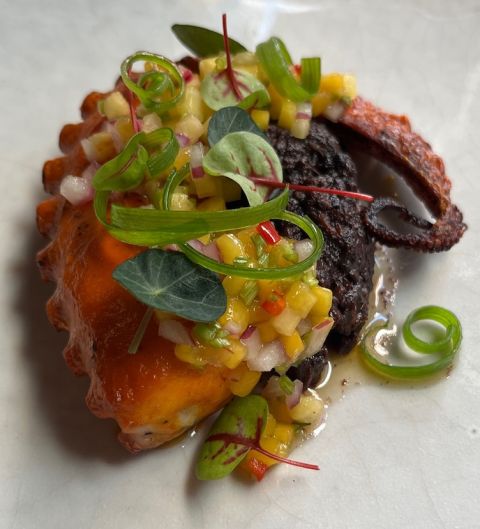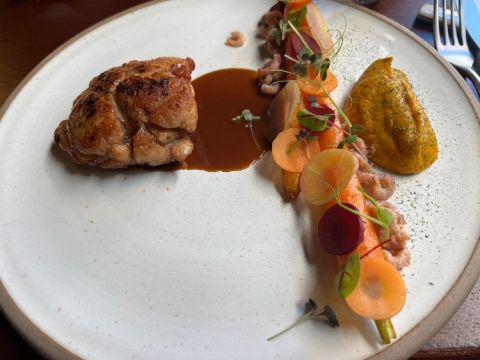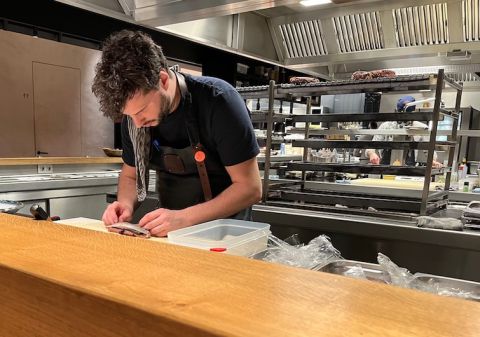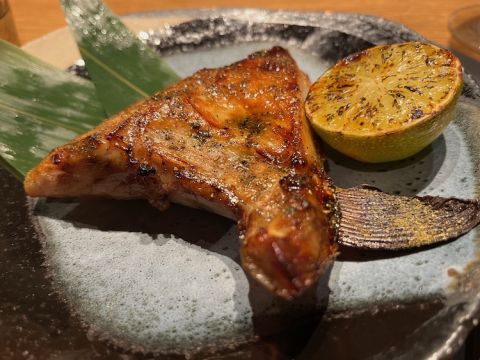I made two mistakes when I set off for a couple of nights in Brussels and Bruges, both of them the result of the incorrect assumption that these two Belgian cities were similar to others in Europe.
I forgot about the cobblestones which still predominate in both cities and, as a result, pulling a small ‘wheelie’ suitcase along became increasingly hard work.
And, as I discovered listening to the pilot of our tour boat round Bruges, many of the bigger houses that have today been converted into smart hotels were built as tall as possible and without lifts (not available in the 16th century) because it was assumed that the taller the building, the closer its inhabitants were to heaven.
Neither of the two hotels I stayed in – Made in Louise in Brussels and the Hotel de Orangerie in Bruges – had a lift. Both are very comfortable but the latter with its proximity to the canals and superior breakfast is by far the better.
I set off from Brussels Zuid/Midi station on the 40-minute walk to lunch and arrived at the charming La Bonne Chère restaurant shortly after 12.15 pm. It is housed in an old building in a part of the city that appears to be extremely popular with shops selling old lace, old plates and old glassware. What had attracted me were not just the good reports about its cooking but also a short but obviously heartfelt addendum at the bottom of its website, which reads:
À très vite!
Lora, Alexandru, Jean-Jacques & Jérémie.
La Bonne Chère had already been converted into a restaurant by its previous owners and today stands as an extremely good example of a restaurant whose current owners display enthusiasm, love of cooking and warmth towards their customers. They do this via a room with a partially open kitchen in the centre and space for tables around it. And via an exciting four-page menu.
I chose a dish of roasted octopus with black pudding (above), a combination that I had never encountered before, and sweetbreads, described as being served with a jus ‘of the land and sea’ and roast carrots. The first course was excellent: the texture of the crisp octopus contrasting with the unctuousness of the soft black pudding, both enlivened by the sweetness of the pickle mixture on top. Better still was my main course with a succulent piece of sweetbread (below) highlighted by a variety of slices of different coloured carrots, all of which was in my opinion secondary to the plethora of tiny little shrimps scattered alongside that evoked the sea and once again provided great textural contrast.
I finished with their interpretation of cheesecake, made from chèvre and Herve, a soft, pungent Belgian cows’-milk cheese that was slightly too strong for the goat’s cheese. With one glass from their wine list and excellent petits fours, the bill came to €85. I admired everything here other than the acoustics: the room has a number of hard surfaces – wooden tables and bare, brick walls were exacerbated by the open kitchen – and there seemed to be nothing in the way of acoustic panelling to mitigate the noise and its reverberation. All of this could be easily ameliorated.
I was reminded of the noisy combination of my wheelie suitcase on Belgian cobblestones twice the following morning: first of all walking to the station for a 50-minute train ride to Bruges and then on the 20-minute walk under leaden skies from Bruges station to my hotel where, with relief, I left my suitcase. For the rest of the day I walked the streets unencumbered.
I was a tourist. And while the centre of this once extremely wealthy city is home to most of the universal brand names, it has still preserved many of the buildings that make it unique and are evoked in the film In Bruges. I watched this again just before visiting and it still didn’t put me off. The biggest difference between modern Bruges and most other city centres is the sheer number of chocolate shops, all advertising that they sell the world’s best chocolate. My personal favourite is Dominique Persoone’s The Chocolate Line in Simon Stevinplein, where the display of the physical transformation of the cocoa bean into chocolate and his chocolate production are both highly distinctive.
I had booked for dinner that evening at LESS, letters which stand for Love Eat Share Smile, which is an outpost of the Hertog Jan restaurant group, established by Gert De Mangeleer and Joachim Boudens. At the end of 2018 they had closed their original restaurant near Bruges and opened Bar Boulot and LESS and then in 2020 they reopened Hertog Jan in the Botanic Sanctuary Hotel in Antwerp, where they have garnered top marks in all the guides with a €360 omakase menu.
When I walked into LESS shortly after 7 pm, their first customer of the evening, my heart sank. The restaurant was large and open with everything on view. It seemed far more suitable for large tables of friends rather than a solitary Englishman who had spent the previous 36 hours on his own talking to no one other than a couple of hotel receptionists. But I was warmly greeted by a smiling young man who doubled as a receptionist and waiter who, after taking my coat and cap, promptly showed me to the corner seat of the bar counter opposite the open kitchen.
I slowly began to take everything in. Facing me were two chefs, head chef Ruige Vermeire (above) and his colleague quietly going about their business, prepping meat and vegetables and checking their fridges before service. Beyond them was, mainly hidden, an area for further preparation and washing up. There were places for a dozen diners to my left along the counter and behind me seating for further 50 to 60. In the interior was a lot of wood; music played courtesy of DJ Jesse; and there was smoke rising slowly from the kitchen’s grills. Overall, it reminded me of Roka in Charlotte Street in London but everything here was on one floor.
The menu was on my place mat. Having taken an order for my customary Campari, my waiter explained that I was to choose one item from the bites section, two from the starters, one main course and one dessert for a fixed price of €89 before wishing me an enjoyable evening. I settled down for a couple of hours of eating and kitchen-watching.
LESS’s menu and wine list are certainly inviting. From the bites section I enjoyed a dish of bluefin tuna with crisp seaweed crackers and puffed rice (above), before moving on to a couple of starters that were here, as in so many places, the highlights of the meal. First up was a piece of hamachi, Japanese amberjack, which had been grilled on the robata in front of me and was presented simply alongside a piece of grilled lemon, its crisp skin glistening.
Alongside this I chose a dish described as ‘white magic’: a combination of squid and lardo with Avruga caviar onto which a soup made from smoked bone marrow was poured (below). This was stunning. Alongside these I enjoyed a glass of 2019 Carnuntum Blaufränkisch made by Dorli Muhr from an eclectic and fascinating list that includes wines from the Sadie Family, a Listàn Negro from Lanzarote and a Barolo, Cannubi 2017 from Elio Altare.
There was no doubt about my choice of main course, described as grilled eel, ponzu-garlic butter and sorrel. Eel is a favourite ingredient and local too with the Dutch border only 15 km (9 miles) away. In anticipation, I watched the chef gently thread it onto the grill and then place it over an open flame until it was cooked.
From there to me was no more than three metres (10 ft) and it was served with a spicy Thai-influenced aubergine dish. My dessert, a fried bun with caramel and tonka ice cream, was too sweet – I believe that the Belgians may be best advised to stick to chocolate.
I paid my bill, a total of €129 including the €89 I had prepaid, and left LESS in an extremely happy state.
La Bonne Chère rue Notre-Seigneur 19, 1000 Bruxelles, Belgium; tel: +32 (0)2 523 75 55
LESS ’t Zand 21, 8000 Brugge, Belgium; tel: +32 (0)5 069 93 69

